Read Part 1 on defining distributed maritime operations.
By Dmitry Filipoff
Introduction
As navies look to evolve during the missile age, much of their ability to threaten other fleets will come down to how well they can mass missile firepower. The ability to combine fires against warships heavily depends upon the traits of the weapons themselves. These traits offer a valuable framework for defining the aggregation potential of individual weapons and the broader force’s ability to mass fires.
In the following breakdowns of tactical dynamics and weapon capabilities, it should become clear that virtually all of the U.S. military’s current anti-ship missiles are lacking crucial traits that are essential for massing fires. The consequence is a force with few good options for sinking ships with missiles, and how this could remain the case through the next decade. But new game-changing weapons are on the way, and DMO is the concept that is poised to harness a major transformation in the U.S. Navy’s firepower.
How Mass Fires Define Limits of Distribution
There is a fundamental tension in looking to spread forces out yet still combine their firepower. The range of weaponry is a critical factor that limits the extent to which forces can distribute from another while still being able to combine their fires. This core tension between distribution and aggregation has a strong influence over the tactics and dispositions of a distributed force.
Longer-ranged weapons allow for the broader distribution of launch platforms, while shorter-ranged weapons will force greater concentration. This dynamic can be illustrated using range rings that show the area forces must reside within if they are to combine their fires against a shared target. Range rings are typically used to show the range of a weapon and are centered on the weapon’s launch platform. In this different method of using “reverse” range rings (for lack of a better term), the ring is centered on the target, and shows the area from where the target can be hit by a given weapon. In other words, to strike a target within the range of the Tomahawk missile, a launch platform must be within a 1,000-mile ring of the target.1 Other platforms using the same weapon must also be within this ringed area, highlighting the extent of distribution that is possible while still combining fires. By comparison, platforms using SM-6 or Harpoon have to distribute within much tighter spaces to combine fires (Figure 1).
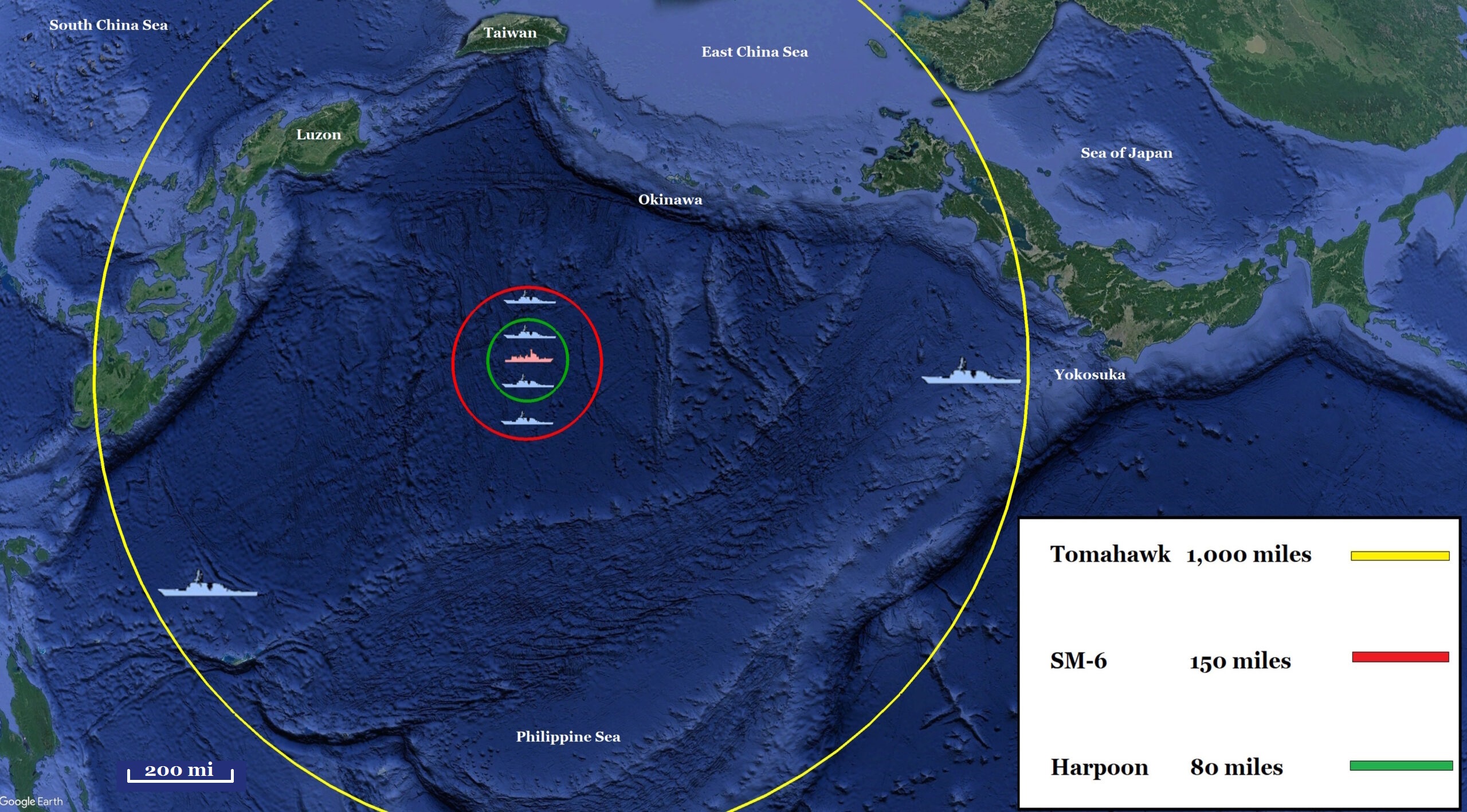
Launch platforms using different weapons with different ranges must have the rings overlap with one another, at least by the time their fires are combining over the target. These reverse range rings show how longer-range weapons allow for the broader distribution of launch platforms, and how shorter-range weapons, especially versions of the common Harpoon missile, force much tighter concentration around a target (Figure 2).

The specific ranges of missiles are strongly affected by their flight profiles and are not always a linear, set amount in practice. Missiles and aircraft that fly higher earn longer range, partly through the thinner air at higher altitudes.2 But this comes at the expense of being more detectable and potentially less survivable. Low altitude sea-skimming flight maximizes the element of surprise at a significant cost to range and fuel economy. Different flight profiles can be programmed into missiles depending on the tactical circumstances, and many anti-ship missiles can be programmed with non-linear flight paths and waypoints.3 It is often unclear in publicly available information what kind of flight profile is associated with the published range of the missile.
These factors make range rings more elastic than they appear. This variability of flight profiles adds another dimension of complexity to combining fires. For the sake of consistency in the graphics used here, it is assumed that all missiles of the same type are using the same flight profile in linear attacks. Another elastic factor is the maximum effective range of a weapon, which is not the same as the maximum flying range. The distance a missile can be effectively targeted can be less than how far the missile can travel. Maximum flying ranges are used here for consistency.
Having long-range weaponry is extremely valuable in modern naval warfare because weapon range helps shifts the burden of maneuver from the slower platform to the faster payload. This advantage is especially critical to navies because of the significant speed differential between ships and missiles. A warship with a short-ranged anti-ship missile would have to maneuver for hours and even days to strike multiple targets spread across an ocean. But a warship with a long-ranged weapon could hold all those same targets at risk simultaneously with no maneuver. A single warship with Tomahawk can hold targets near Luzon, Taiwan, and Okinawa at risk simultaneously, while a ship with SM-6 could only hold one of those areas at risk at a time. The warship with SM-6 would have to spend significant time maneuvering to eventually hold all of these areas at risk, and only in sequence (Figure 3).
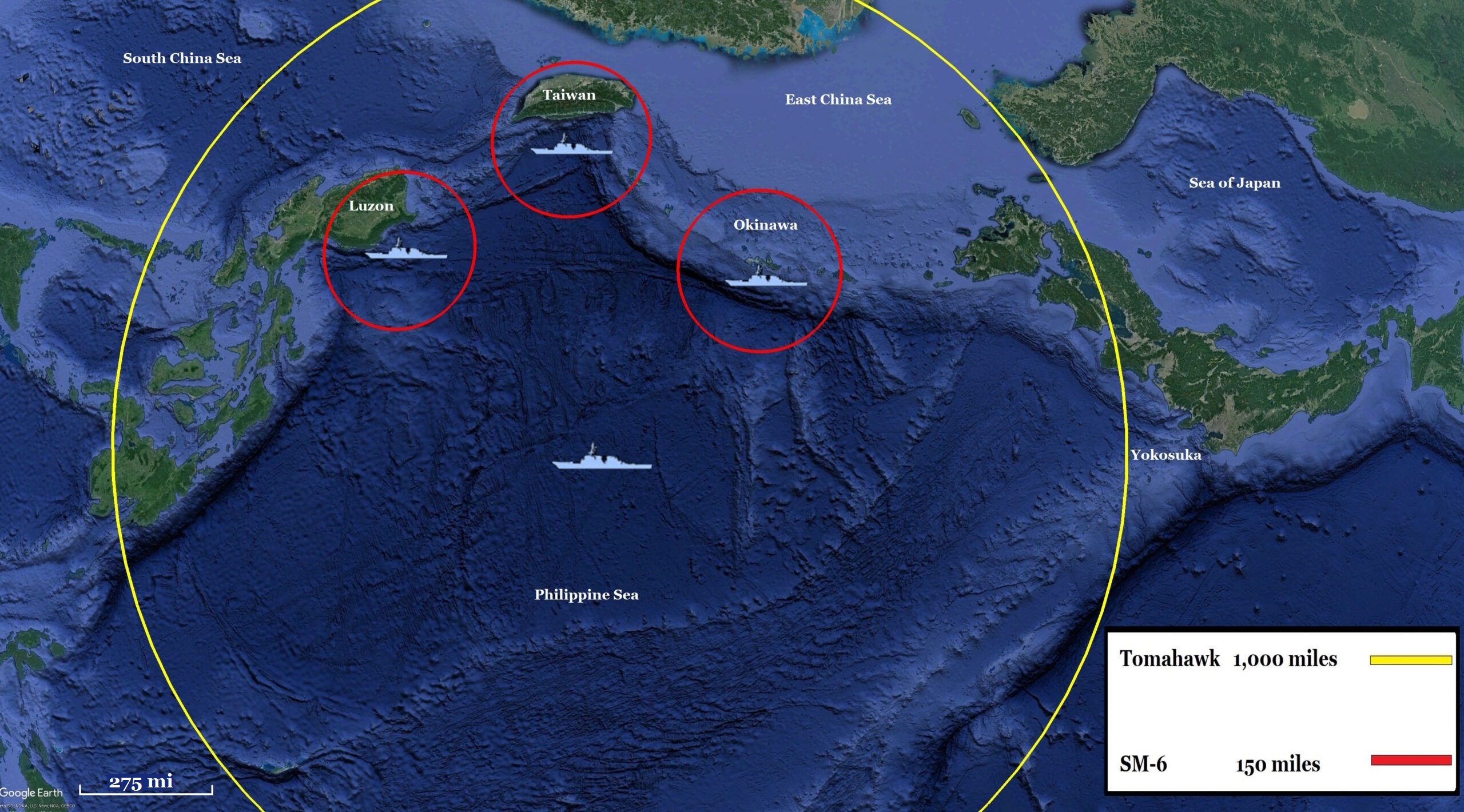
This relationship between range and maneuver highlights the critical dynamic of how one force’s distribution can make the adversary’s stretched thin or concentrated. If one force package has shorter-ranged weapons than its adversary, it has less space it can distribute within and still combine fires. The short-ranged force package is more concentrated than its opposition, and may only be able to threaten one portion of the opposing distributed force at a time, if it can get in range. By comparison, many more elements of the distributed force can hold the shorter-ranged force at risk, and from safer standoff distances. Rings within rings can illustrate how the force with longer-ranged weapons can enjoy a broader distribution and mass firing advantage over a force with less range (Figures 4 and 5).
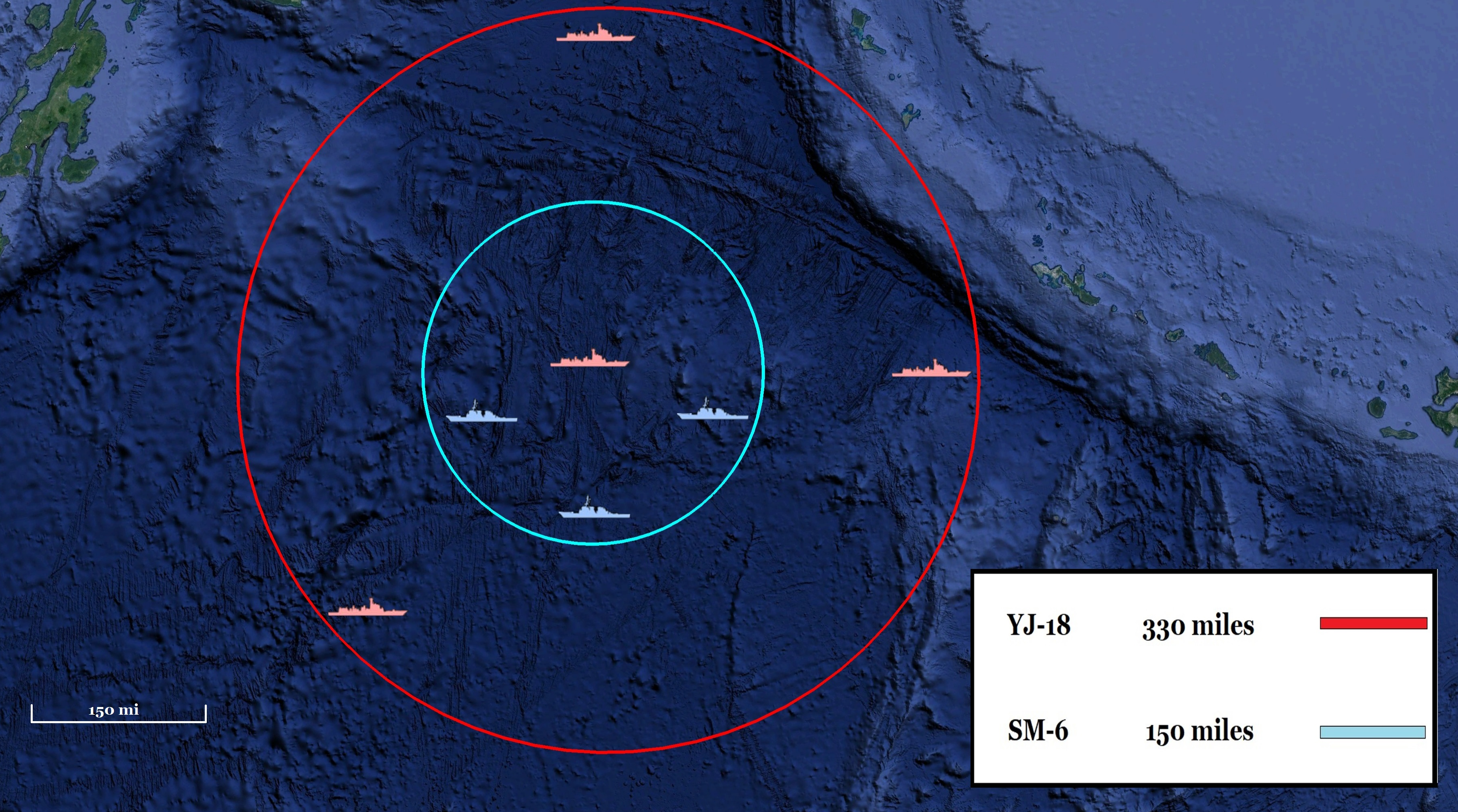

What can be defined as distributed, concentrated, or stretched thin is less a matter of a specific range or density of forces. Rather, it is better understood as a relationship between one’s own capabilities, and how that compares to the relationship between the capabilities of the adversary. A force that believes it is well-distributed could actually be heavily concentrated in the context of an adversary with much longer-ranged capability.
Anti-ship weapons that are specifically designed for multi-role aircraft are often much smaller than warship-based weapons that are fielded in large launch cells, which often causes these aircraft-based weapons to have lesser range. Aircraft can compensate for lesser weapons range with their faster platform maneuver, whereas warships can compensate for their slower platform maneuver with the longer range of their larger weapons. Understanding this relationship between platform maneuver and payload maneuver and how they can complement and compensate for one another is critical to assembling massed fires.
But range is only one critical variable for assessing the ability to mass fires. Other critical traits include launch cell compatibility, platform compatibility, number of weapons procured, and numbers of weapons fielded per platform. These traits combine to highlight the true extent of a navy’s offensive firepower.
Harpoon and the Perils of Carrier Strike
The Harpoon missile was the U.S. Navy’s first anti-ship missile and has remained its primary anti-ship weapon for more than 45 years.4 The way the U.S. Navy has continued to field this missile has created severe operational liabilities for U.S. sea control and the credibility of American security guarantees in the Indo-Pacific writ large. The Harpoon missile underscores a critical capability gap of major strategic significance by highlighting just how little anti-ship missile firepower the U.S. military has. The weapon’s shortcomings are emphasized by the especially risky tactics the U.S. would be forced to use in war to make much use of it.
The Harpoon missile’s greatest weakness comes through its combination of short range at 80 miles for the more common variants and the lack of meaningful inventory in all its compatible launch platforms save for one – aircraft carriers.5 The short range of this missile draws the U.S. Navy’s most expensive and least risk-worthy platform deeper into the battlespace, while funneling carrier air wings into exceedingly concentrated anti-ship attacks. But because the U.S. Navy has lagged for decades in fielding a meaningful replacement for Harpoon, the highly risky method of attacking ships with carrier air wings is the only tactic the U.S. military effectively has for sinking high-end warships at long range.
The Harpoon missile has the broadest platform compatibility of any U.S. anti-ship weapon, where it can be fielded by submarines, surface ships, bombers, land-based launchers (which the U.S. sells to partners but does not procure for itself), and carrier air wings. But despite the U.S. Navy having more than 9,000 vertical launch cells for missiles, the Harpoon is incompatible with these launchers.6 Instead, it has to be kept in torpedo racks or in launchers mounted topside, which are highly uneconomical methods that severely reduce the number of weapons that can be fielded per warship. U.S. Navy destroyers and cruisers only carry eight Harpoon missiles despite having around 100 launch cells per platform, and the number of torpedo tubes per submarine typically numbers in the single digits. What launch cells offer is significant magazine depth on both an individual platform and force-wide basis, making launch cell compatibility a crucial trait for massing fires.
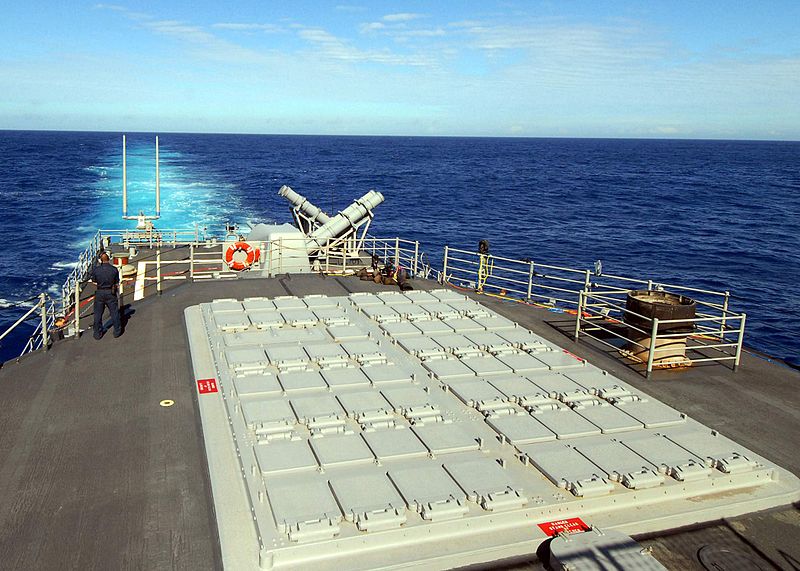
As a general rule of thumb, any alert and modern warship larger than a corvette should be able to hold its own against a salvo of only eight subsonic anti-ship missiles, or else the warship can hardly justify its cost. U.S. surface and submarine launch platforms are hardly able to muster enough volume of fire to credibly threaten most modern warships with their sparse inventories of Harpoon missiles. This shallow magazine depth creates a strong need for massing fires between multiple platforms to achieve enough volume of fire. But the extremely short range of Harpoon means this weapon has barely any potential for aggregation with other ship-launched Harpoon missiles, unless commanders are willing to concentrate numerous warships to an extreme degree.
This combination of launch cell incompatibility and short range in the Navy’s mainstay anti-ship weapon forces carrier aviation to shoulder most of the burden of massing enough volume of fire. Only the air wing can conceivably mass enough platforms to create enough volume of fire, while having a chance of getting those platforms close enough to a target warship to launch a strike. These factors make aircraft carriers the only platform that can muster a combat credible volume of Harpoon fire.
An F/A-18 Hornet can equip up to four Harpoon missiles, where only two of these aircraft can match the Harpoon firepower of a U.S. Navy cruiser or destroyer. But against high-end warships, achieving combat credible volumes of Harpoon fire requires massing large numbers of carrier aircraft. Overwhelming a single surface action group of several modern destroyers, each with dozens of anti-air weapons and several layers of hardkill and softkill defenses, could conceivably require the majority of an air wing. The remaining few aircraft would be thinly stretched between maintaining combat air patrols, providing tanking and jamming support to the striking squadrons, among other roles. By heavily concentrating the burden of massing volume of fire on air wings, those air wings are subsequently stretched thin across a multitude of other critical missions.
Attempting to mass fires with a missile that is very short-ranged creates severe tactical risks. The short range of Harpoon forces an extremely tight and dense concentration of carrier aircraft around the target to muster enough firepower to be overwhelming. Harpoon’s short range also makes it a weapon that cannot always be confidently fired from standoff distances beyond the range of modern air defenses, unlike many anti-ship missiles. Instead, Harpoon can force air wings to concentrate themselves well within the range of opposing shipboard air defenses. Warship air defense weapons, such as China’s HHQ-9B missiles, can approach and even exceed the short ranges of the Harpoon, putting adversaries into the more favorable position of being able to threaten archers before they can fire arrows (Figure 6).7

Survivability concerns not only apply to carriers, but to their air wings as well. Air wings are highly sensitive to attrition, where losing even a few aircraft per sortie can quickly render certain missions unsustainable. This is especially true for anti-ship missions that require large numbers of aircraft to achieve sufficient volume of fire. The Navy’s air wings can be risking substantial losses by using a missile that is so short ranged that it can force them to send large and tightly concentrated aerial formations into the teeth of modern naval air defenses. The air wing’s ability to mass enough anti-ship firepower would be rendered impotent in a matter of days if not hours by suffering even minor losses on only a few of these risky strikes.

Carrier air wings may be resisted by far more than warship air defenses. The signature posed by a mass of carrier aircraft heading toward a target at high altitude could provide plenty of warning to vector opposing airpower into position to blunt the strike. Compared to the aircraft defending the airspace, anti-ship squadrons would likely be at a hardpoint and maneuverability disadvantage. Many of their hardpoints would be taken up by a combination of heavy anti-ship weapons and drop tanks, with potentially fewer anti-air weapons loaded compared to the opposing dogfighters. If the anti-ship aircraft are intercepted before they are within range of attacking warships, they may be forced to dogfight and evade missiles while having their maneuverability impacted by the heavy anti-ship weapon loadouts. Drop tanks, anti-air, and anti-ship weapons will compete for similar hardpoints on carrier aircraft, setting the stage for difficult tradeoffs between survivability, concentration, and mustering enough volume of cruise missile fires.
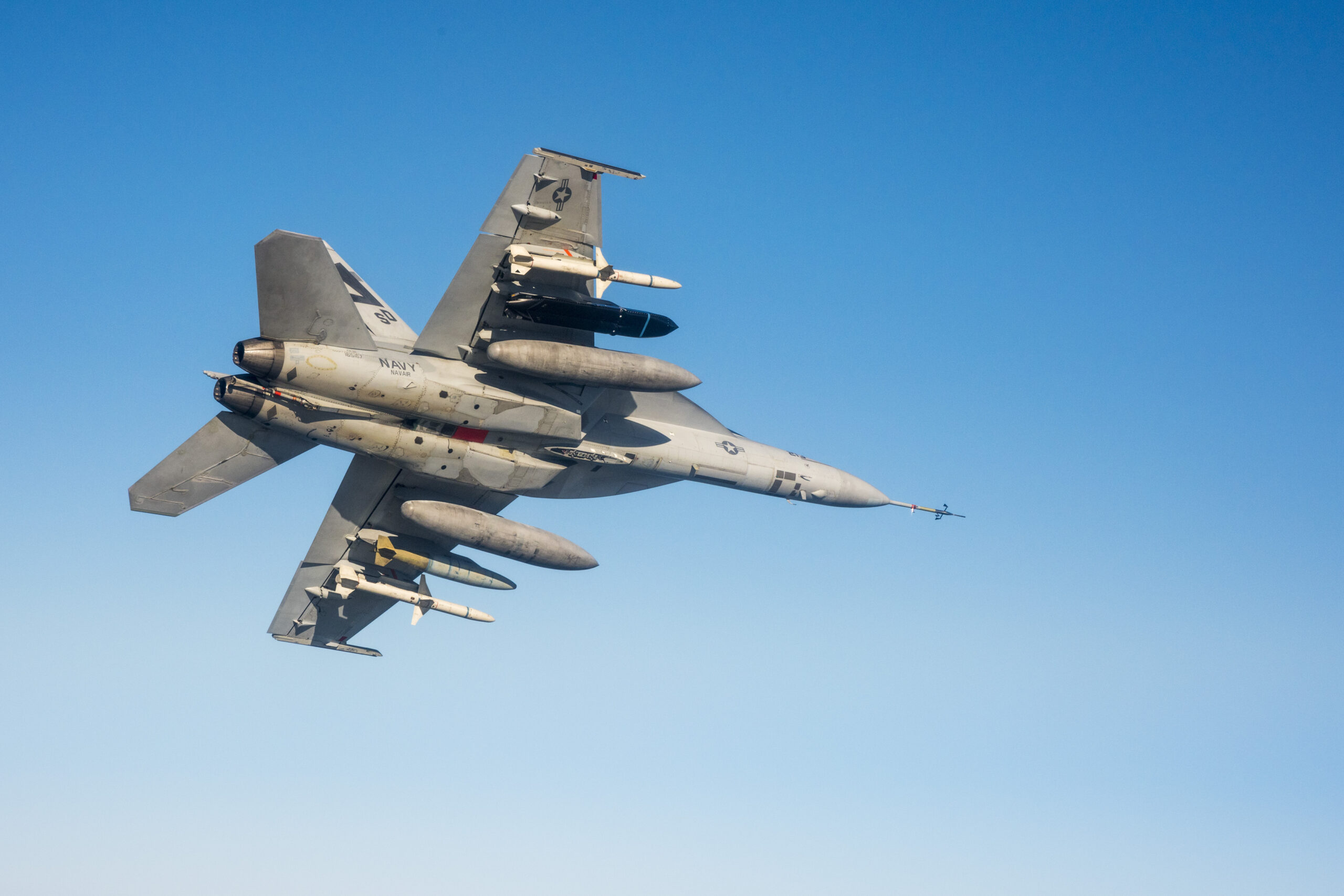
Anti-ship strikes can be conducted near the limits of the air wing’s range to maximize standoff distance. But the short range of Harpoon combined with the relatively short range of current generation carrier aircraft (compared to past and future generations of air wings), forces the carrier deeper into the contested battlespace and potentially incurs more risk. Harpoon not only threatens the tight concentration of valuable carrier aircraft around targets, it threatens to pull the carrier itself deeper into riskier territory.
Extending the range of the air wing through drop tanks or tanking aircraft can help keep the carrier further out, but this will diminish the volume of firepower by devoting hardpoints and aircraft to fuel instead of weapons. This can benefit the survivability of the carriers more than the air wings, where adding range to the air wing can improve the carrier’s survivability by allowing it to launch strikes from further away. But this will do less for the air wing’s survivability because the short range of their anti-ship weapons will still force tight concentration around the target regardless.
When it comes to managing the signatures of aircraft carriers, not only does the signature of the carrier have to be taken into account, but the signature of the air wing as well. The signatures and footprints of air wing operations can contribute toward concealing or revealing the carrier’s location. Maximizing the standoff range of an air wing launching a massed anti-ship strike encourages a more linear flight path to and from the target, a denser concentration of aircraft throughout the flight path, and higher altitude flight that extends the range but increases the detectability of the aircraft. Even though it maximizes standoff distance, a linear flight path could more easily lead an adversary back to the carrier by virtue of predictability.
Shortening the carrier’s range to the target or devoting more hardpoints and aircraft to fueling can give the air wing more margin to increase the complexity of force presentation. It can allow the air wing to more widely distribute itself and take nonlinear paths to and from the target, which can help conceal the carrier’s location (Figure 7). However, ensuring a disaggregated air wing can effectively come together on time to mass fires poses more complex challenges for mission planning compared to a more linear strike, especially when combining fires with other types of platforms. And a distributed nonlinear flight profile may have to come at the cost of decreasing the overall striking range of the carrier and pull it deeper into the battlespace.
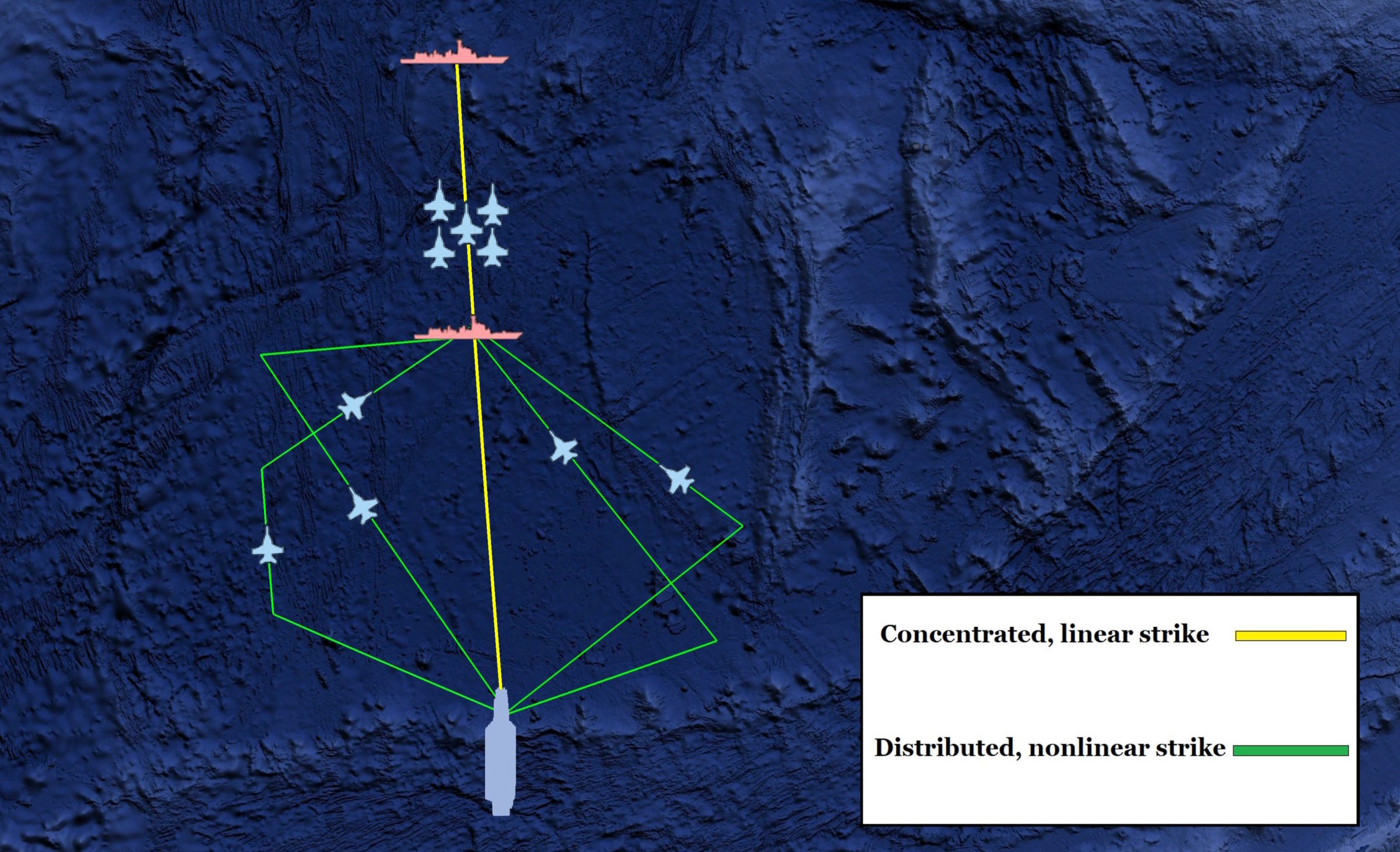
Overall, many of the survivability concerns and tradeoffs of using air wings and carriers in anti-ship roles are substantially worsened by the Harpoon missile’s traits. But the major advantage Harpoon has over all the other anti-ship weapons in the U.S. arsenal is its inventory numbers. While recent public information on current figures appears unavailable, data from the 1990s suggests an inventory of as many as 6,000 missiles.8 It is reasonable to assume that the figure today remains in the thousands, compared to most other U.S. anti-ship missiles which have been procured only in the hundreds or dozens. But the ability to leverage the depth of the Harpoon inventory is tightly bottlenecked by the shallowness of the individual platform magazines it is fielded in, given its launch cell incompatibility.
Due to the major risks air wings and carriers must take to effectively mass the very short-ranged Harpoon, maybe the Navy’s carriers would be better served by not using this weapon in a fleet-on-fleet fight. Doing so could enhance the survivability of carriers, air wings, and the surface ships that escort them. But it would mean coming to terms with how the vast majority of the U.S. Navy’s force structure and missile arsenal is hardly able to threaten modern naval formations with anti-ship firepower. Virtually all of the U.S. military’s anti-ship capability could then be narrowly confined to what the submarine force can accomplish with torpedoes alone.
One has to be careful about extrapolating specific tactics from basic weapon limits, given how shortcomings in capability can be compensated by creative operational design. Maybe the Navy is counting on the submarine force sinking the adversary’s high-end surface combatants to pave the way for carrier anti-ship strikes, but that will do little against the land-based airpower those carrier aircraft may still have to tangle with.
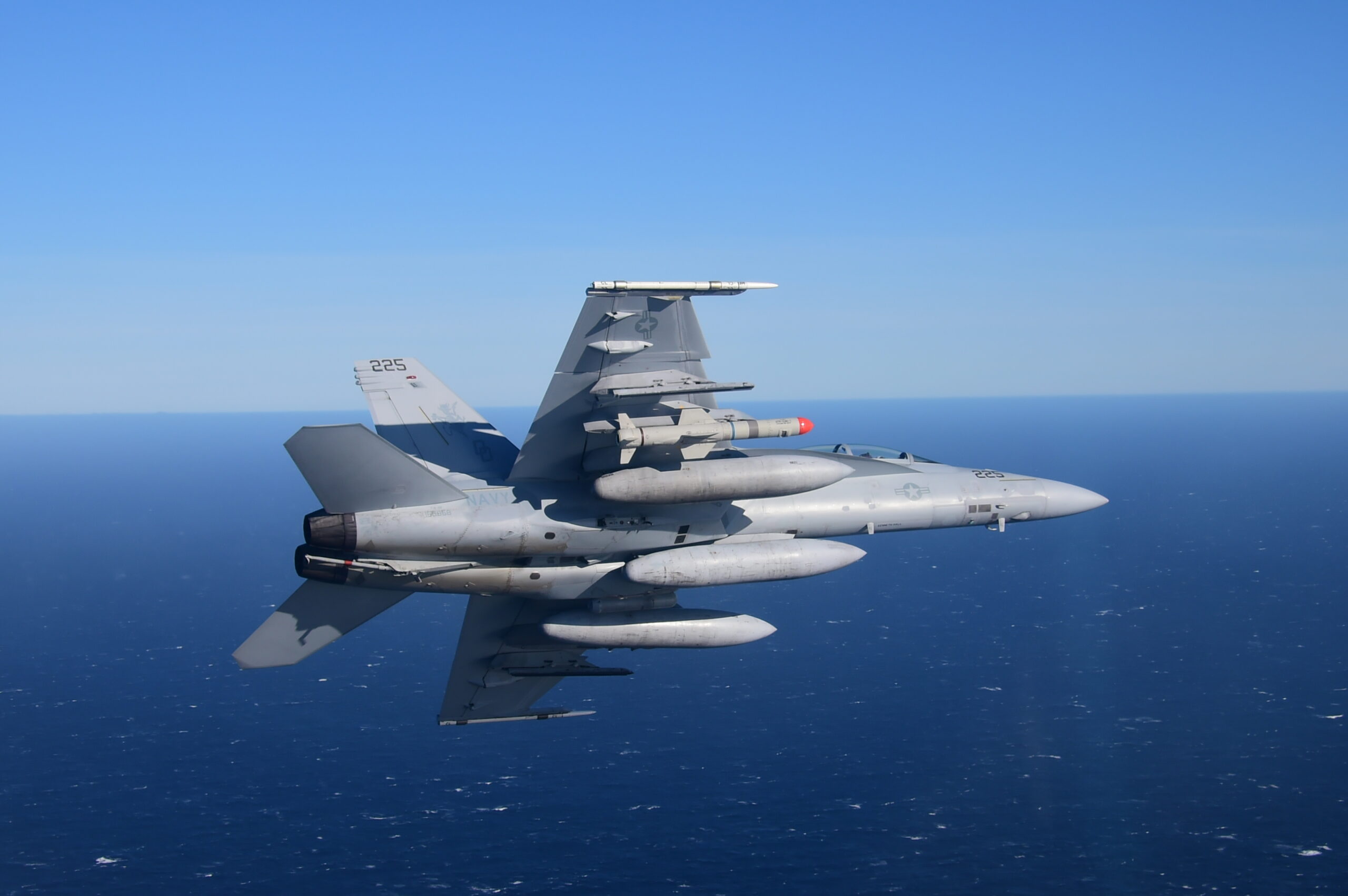
This design of having the entirety of the U.S. military’s long-range anti-ship capability completely concentrated in massive aircraft carriers, who must in turn heavily concentrate their valuable air wings to execute the tactic, is extremely contrary to the principle of distribution. What Harpoon tactics reveal is that after severely lagging in anti-ship missile development for more than half a century, the U.S. Navy has deprived itself of many critical options for fighting another great power navy.
SM-6 and Diluting Capability Across Missions
The SM-6 is unique among the Navy’s anti-ship missiles. It is the only supersonic anti-ship weapon in the Navy’s arsenal, it can be used against both aerial and warship targets, and it has the highest production rate of the Navy’s latest generation of anti-ship weapons. Featuring 150 miles of range for the more common variants, it offers a modest improvement of range over the latest Harpoon variants.9 It is also the only Navy shipboard anti-air missile that may be used to aggregate defensive firepower at long range. However, some of the supposed strengths of SM-6 create drawbacks when it comes to massing firepower for anti-ship strikes.
The high speed of the SM-6, which is more than Mach 3, improves the survivability and lethality of the missile when it comes to breaking through warship defenses and striking the target at high speeds.10 However, the high speed of the missile complicates its ability to combine fires with the Navy’s other anti-ship weapons, which are all subsonic. If SM-6 is to combine with subsonic missiles, then it must either be fired near the end of a mass firing sequence to ensure timely overlap, or the platforms firing subsonic missiles must be much closer to the target than the warship firing SM-6. (This dynamic will be discussed more closely in Part 3.)
The multi-mission versatility of the weapon poses challenges for effective mass fires by complicating release authorities. If a distributed force is to combine anti-ship fires across multiple platforms, then the release authority for offensive anti-ship weapons may naturally reside at a higher echelon than the commander of an individual ship, who typically lacks the organic sensors to target these weapons against warships at long range. But the intense speed and lethality of missile attacks on warships means individual commanders should be afforded the authority to prosecute their local air defense missions with great initiative, especially to avoid defeat in detail. If a unit-level commander feels compelled to employ SM-6 for the sake of ship self-defense, then that may diminish a higher-echelon commander’s options for massing anti-ship fires.
The typical flight profile of long-range anti-air weapons poses another challenge to the effectiveness of SM-6 as an anti-ship weapon. While long-range anti-air weapons can certainly hit sea-level targets, their initial phase of flight typically involves a boost phase that takes them to higher altitude.11 Higher altitude makes it easier for the missile to achieve its maximum speed and range before it descends back down to hit lower-altitude threats. However, a higher altitude flight profile creates disadvantages when attacking warships. High-altitude flight broadens the area from which a missile can be detected and engaged from, possibly giving more warships the opportunity to engage the missile and with more time to take multiple shots. Sea-skimming flight by comparison can force air defense engagements into the immediate area of only the target warship. The SM-6 missile’s high speed is not so great that it effectively compensates for these risks of high-altitude flight. The boost phase of an SM-6 launch can give almost double the reaction time to a target warship’s radars compared to a slower subsonic missile that is only detected after it breaks over the target’s horizon.12
It is unclear if SM-6 can be fired on a flatter trajectory and maintain an end-to-end sea-skimming flight profile. Doing so would likely deprive it of a significant amount of range. It would also make it more difficult for the missile to apply the greatest source of its lethality against warships – its high speed. The warheads of anti-air weapons are much smaller than those of purpose-built anti-ship weapons, where the warhead of SM-6 is about only 15 percent of the size of an LRASM or Tomahawk warhead.13 SM-6 needs to reach high speeds to be at its most lethal against warships, but achieving those speeds is heavily dependent on higher-altitude flight profiles that make the missile less survivable.
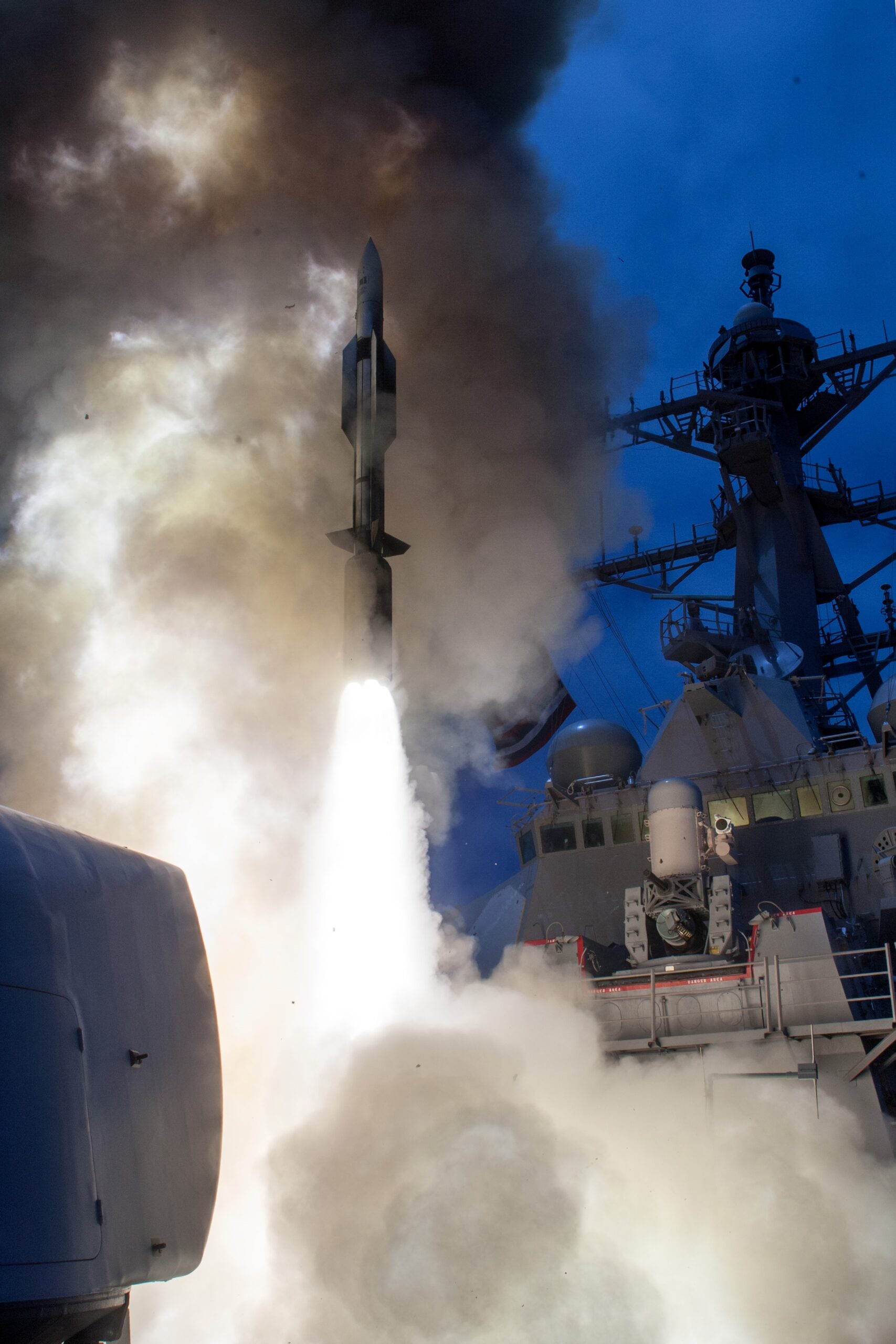
The range of SM-6 is not so long that its offensive anti-ship roles can be cleanly separated from its defensive anti-air roles. The concept of “standoff” fires implies that a valuable margin of survivability can be earned by outranging an opponent’s ability to strike back. But the range of many great power anti-ship missiles is great enough to where SM-6 cannot be comfortably used in a purely standoff role for attacking modern warships. If a warship is within range of attacking another high-end warship with SM-6, then it is also likely within range of anti-ship missile threats that could force the ship to expend SM-6 on defense instead. This effect becomes even more relevant when longer-ranged weapons like opposing anti-ship ballistic missiles can cast a long shadow over thousands of miles of ocean.14 Commanders may opt to reserve their most capable air defense weapon for protection against the adversary’s most capable anti-ship missiles.
Because modern anti-ship weapons tend to outrange most anti-air weapons, it is much more feasible to combine offensive firepower than defensive firepower from across distributed forces. SM-6 may mark an exception by using the unique NIFC-CA capability that allows it to be targeted beneath the radar horizon of the launching warship. The range of SM-6, its high speed relative to the subsonic anti-ship missiles it could be used against, and its ability to be retargeted beneath the horizon make the aggregation of defensive firepower possible.15 This is an especially unique capability, but adds more complexity to the command-and-control arrangements undergirding massed fires.
Compared to all of the Navy’s other modern anti-ship missiles (excluding the aging Harpoon), SM-6 has an advantage in being produced at consistent full-rate production for a number of years since being introduced in 2013, with more than 1,300 missiles in the inventory.16 By comparison, all of the Navy’s other latest generation of anti-ship weapons currently exist in very low numbers that make them hardly applicable to the large-scale salvo requirements of modern naval warfare.
However, most of the SM-6 production runs to date have been for earlier variants whose anti-ship ranges are only marginally better than the latest Harpoon variants.17 While longer-ranged versions of SM-6 are forthcoming, the vast majority of the current inventory will offer little improvement in broadening the extent to which warships can distribute and still be able to combine fires.
Even if longer-ranged versions of SM-6 quickly arrive in large numbers, much of the missile’s versatility could have to be set aside to fill the Navy’s critical anti-ship capability gap through the near term. SM-6 is currently the Navy’s only somewhat numerous, launch-cell compatible, and long-range anti-ship weapon. But its multi-mission capabilities threaten to dilute the inventory across diverse threats. The Navy may be forced to maintain SM-6 as its only viable modern anti-ship missile until other anti-ship weapons are produced in large enough numbers to make a real difference and free SM-6 to fulfill its air defense potential. But given how current production runs are trending, this could take at least 10-15 years to accomplish. If the Navy finds itself in a major naval conflict this decade, it may be forced to forego much of SM-6’s cutting edge air defense capability for the sake of retaining a modicum of long-range anti-ship firepower.
Maritime Strike Tomahawk – The Foundational Enabler of Massed Fires
More than 40 years after an anti-ship Tomahawk first struck a seaborne target in testing, the Navy will be reintroducing an anti-ship variant of the missile.18 More so than any other U.S. anti-ship weapon to be fielded in the coming years, the Maritime Strike Tomahawk holds the greatest promise in fostering a major evolution in the Navy’s ability to distribute platforms and mass anti-ship fires.
Tomahawk’s great advantage is its combination of launch cell compatibility and very long range at more than 1,000 miles.19 Many platforms will be able to carry large numbers of an especially long-range weapon, creating a wide range of options for massing fires. Long range also gives the weapon more opportunity to vary its flight paths and use waypointing, which can be used to execute a variety of tactics and facilitate aggregation with other salvos.
By finally having an anti-ship missile that is both long-range and launch cell compatible, the Navy will be poised to drastically increase the amount of anti-ship firepower across a much greater distribution of platforms. Land-based Tomahawk launchers are also on the way for the U.S. Army and Marine Corps, which will significantly increase options for massing fires if those services procure the weapon in major numbers.20

However, the Maritime Strike Tomahawk’s potential will not be fully realized until many years from now. It will not reach initial operating capability until 2024 and is currently in its early years of low-rate initial production and testing, with roughly 100 MST kits procured so far.21 The Navy is looking to upgrade all of its Block IV Tomahawks into Block V variants, and it is possible up to 300 recertification kits may be installed per year.22 But it is unclear if every recertification will also add the maritime strike capability through the specific Block Va configuration.23
At this rate, it could take 10 or more years before the Navy has enough inventory of the foundational missile that will allow it to truly make distributed and massed anti-ship fires a reality.
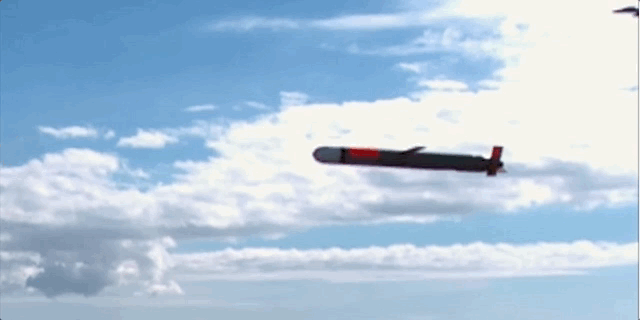
LRASM – A Leap Forward Yet Still More of the Same
The Long-Range Anti-Ship Missile (LRASM) will mark an important upgrade to the Navy’s anti-ship firepower. Featuring a stealthy profile and an estimated range of around 350 miles, LRASM outranges all of the Navy’s other anti-ship weapons except for Tomahawk.24 Yet LRASM does little to enhance the Navy’s ability to mass fires from across distributed forces.
LRASM’s potential for mass fires is heavily constrained by platform compatibility because it is not a launch cell compatible weapon. LRASM can only currently be fielded by bombers and carrier aircraft. Despite tests suggesting that LRASM can be fired from launch cells, the Navy continues to describe the program as “a key air launched component of the Navy’s overall Cruise Missile Strategy…”25 In 2021, industry partnered with an Australian firm to refine the development of a surface-launched variant of LRASM that has been termed “LRASM SL,” suggesting that launch cell compatible versions of this weapon are distinct from what the U.S. Navy is procuring for itself.26

Even though LRASM’s range makes it a much less risky missile for air wings to fire at targets compared to Harpoon, these strikes would still tie down a large portion of the air wing to mass enough firepower to be overwhelming. LRASM does not alleviate the need for large volume of fire, which strains the air wing’s ability to cover multiple other roles besides strike. Even with its advanced capabilities, LRASM will not change certain fundamental disadvantages of massing air wings to conduct long-range strikes against warships.
The amount of LRASM inventory is extremely low at about 250 missiles procured for the Navy so far.27 The Air Force’s inventory is even smaller and only numbers slightly less than 100.28 Although the Air Force’s bombers can equip Harpoon missiles, the short range of that weapon and their especially low procurement rate of LRASM may mean the U.S. military’s bombers will have barely any anti-ship firepower to contribute to U.S. sea control for the foreseeable future.
LRASM shares a production line with the much more numerous Joint Air-to-Surface Standoff Missile (JASSM) it is adapted from, and where more than 2,000 JASSM weapons have been procured by the U.S. Air Force so far, and where the Navy has begun to procure the weapon within the past two years.29 The newest forthcoming “extreme range” variants of the JASSM ground-attack missile will feature ranges of up to 1,000 miles, making it one of the first air-launched cruise missiles that can rival the ranges of Tomahawk.30 The JASSM production line is also the most robust of any of the missiles described thus far, with annual production runs numbering in the hundreds as opposed to the other missiles that are only being procured by the dozens.31
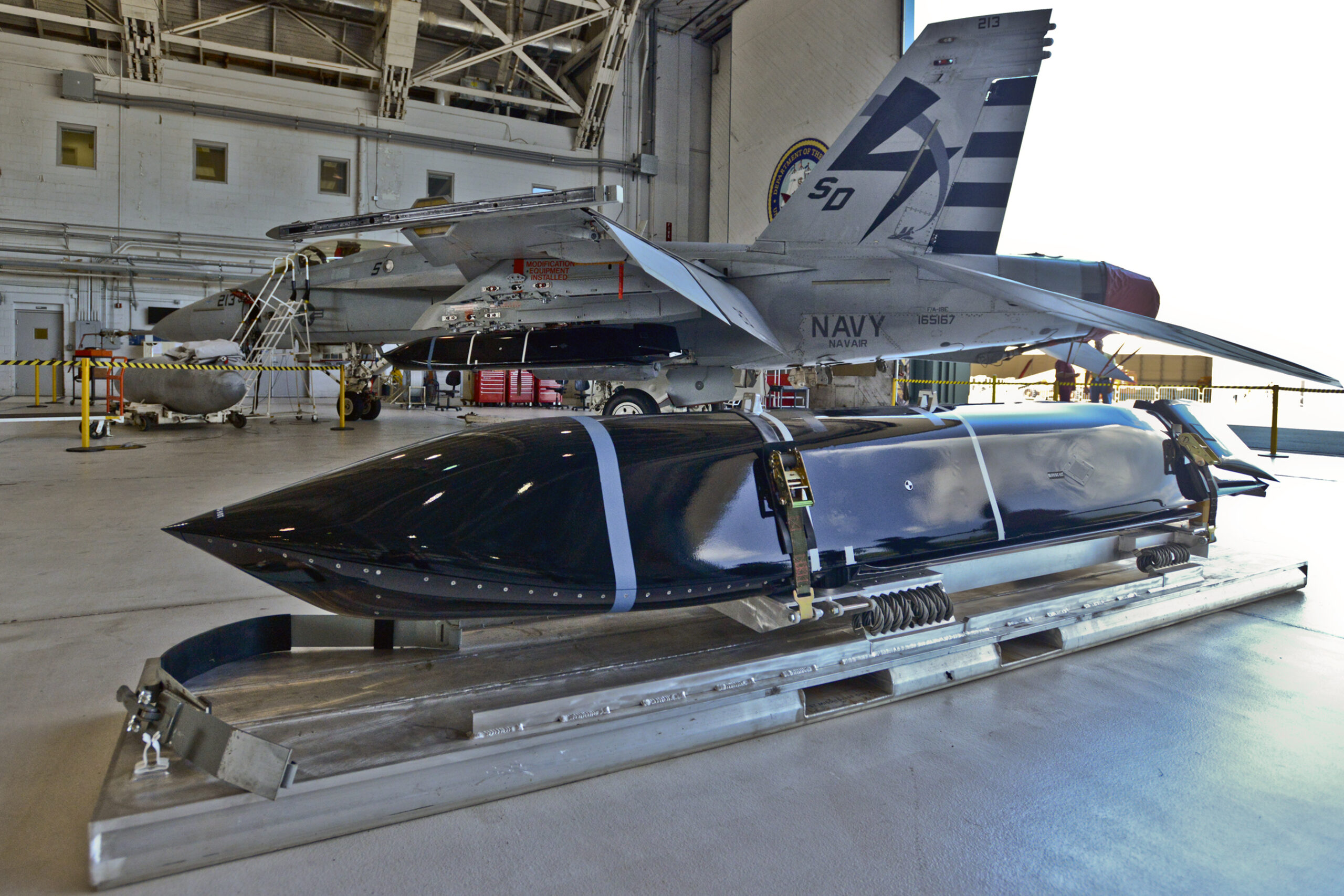
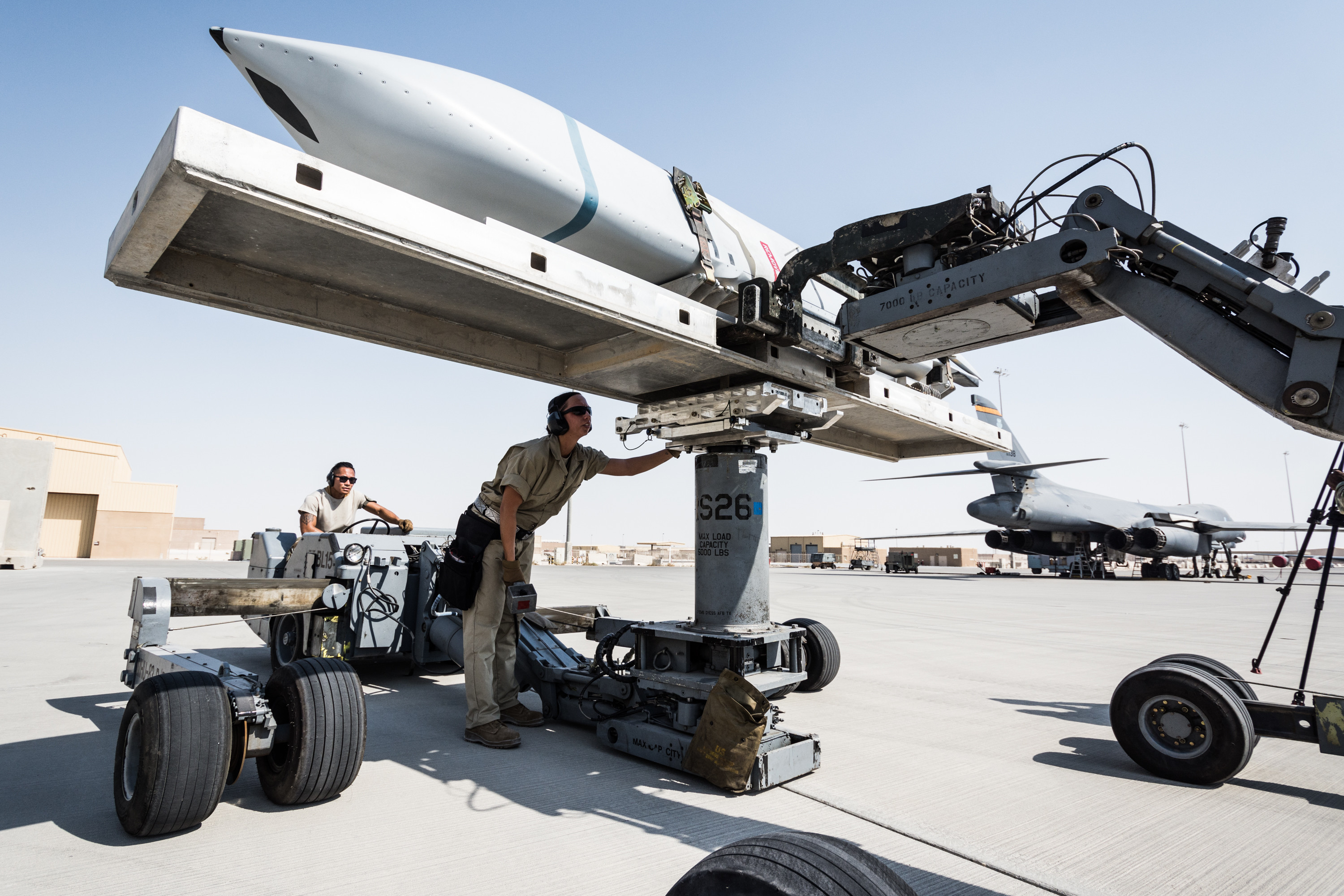
The two anti-ship weapons that hold the most promise, LRASM and Maritime Strike Tomahawk, are adaptations of existing munitions that have been produced in far greater numbers – JASSM and the land-attack Tomahawk. Upgrading these existing weapons with anti-ship capabilities and seekers may be a more rapid and cost-effective way to ramp up the anti-ship weapon inventory of the U.S. military compared to building new weapons wholesale. If the forthcoming extended-range variants of JASSM can feature anti-ship capabilities, then the U.S. military will open up a vast array of new options for the distribution and aggregation of firepower between naval and air forces.
Naval Strike Missile – Only Slightly Better Than Harpoon
The Naval Strike Missile (NSM) features a stealthy profile and an advanced seeker, but it brings only a marginal improvement over Harpoon. Similar to Harpoon, NSM has relatively short range at 115 miles and it is not compatible with launch cells.32 It is mainly being fielded by the Navy’s Littoral Combat Ships with only eight weapons per ship, and the Marines are procuring a land-based version. Its short range and launch cell incompatibility make this weapon poorly suited for massing fires from distributed forces. Low procurement rates put the current inventory at slightly more than 110 missiles, hardly enough to make the weapon widely fielded and available for mass fires.33 The main utility of both Harpoon and NSM in a major naval conflict may be relegated to engagements against smaller and more isolated combatants, perhaps in secondary theaters and areas peripheral to larger salvo exchanges.
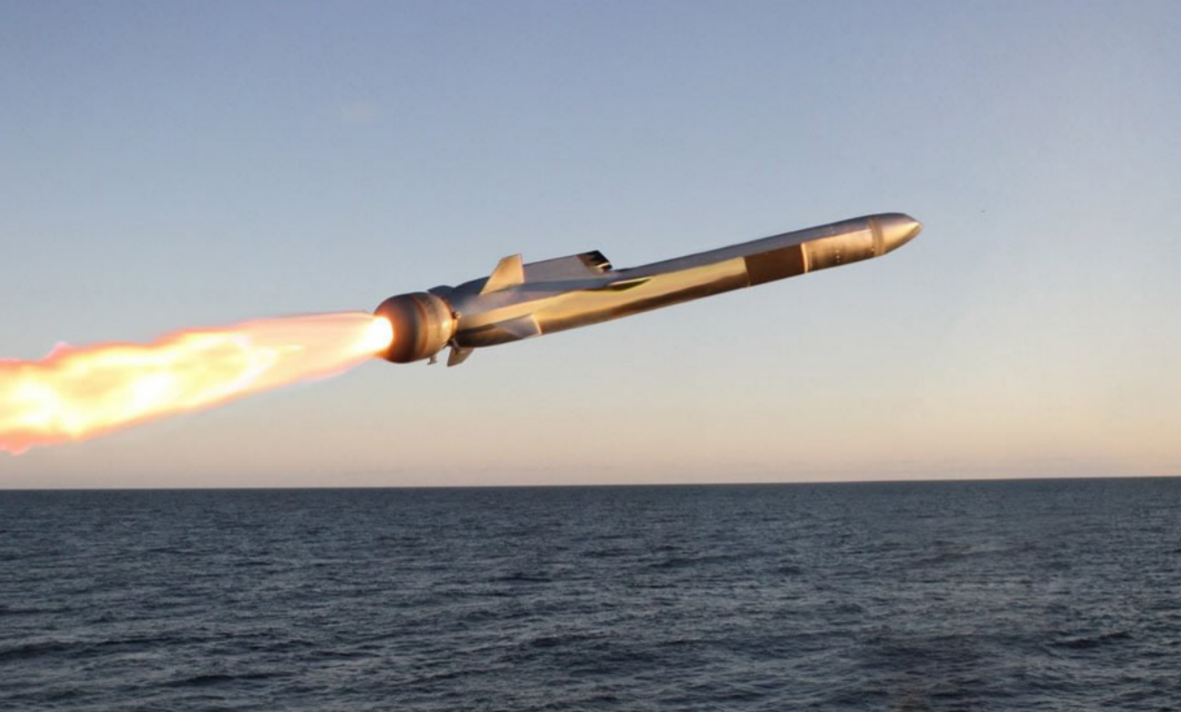
A Brittle Spear
The ability to mass fires is fundamentally enabled by fielding a large number of long-range missiles across a wide variety of platforms. In terms of numbers, range, and variety, the U.S. military falls woefully short. The U.S. military cannot execute the tactic of distributed massed fires against warships today because it simply does not have the weapons to make it possible. Its current anti-ship missile firepower is extremely concentrated in aircraft carriers and tightly stretched thin everywhere else.
None of the newer U.S. anti-ship missiles will do much to improve the Navy’s ability to distribute and still combine fires, except for Tomahawk. LRASM can somewhat broaden the scope of physical distribution of launch platforms, but it is still a heavily concentrating weapon due to its narrow platform compatibility. LRASM will do little to alleviate the carrier’s heavy burden of shouldering most of the U.S. Navy’s anti-ship capability.
The Maritime Strike Tomahawk strongly stands out as the weapon with the most transformational promise, and it is absolutely fundamental to manifesting DMO. Finally the U.S. Navy will have anti-ship weaponry that is both long-range and compatible with its launch cells, and finally the U.S. military will have more viable anti-ship missile platforms than just carriers. This stands in sharp contrast to great power competitors, who have already broadly distributed anti-ship firepower across their surface fleets, bombers, land-based forces, and submarines.34
A central risk factor is considering what proportion of the overall volume of fire each type of weapon may contribute. Based on these key traits, more risk is incurred the less suitable a weapon is for mass fires. Weapons such as Harpoon or the Naval Strike Missile can certainly add a fraction of the contributing fires, but the more these weapons make up mass fires, the more risk the force will have to assume.
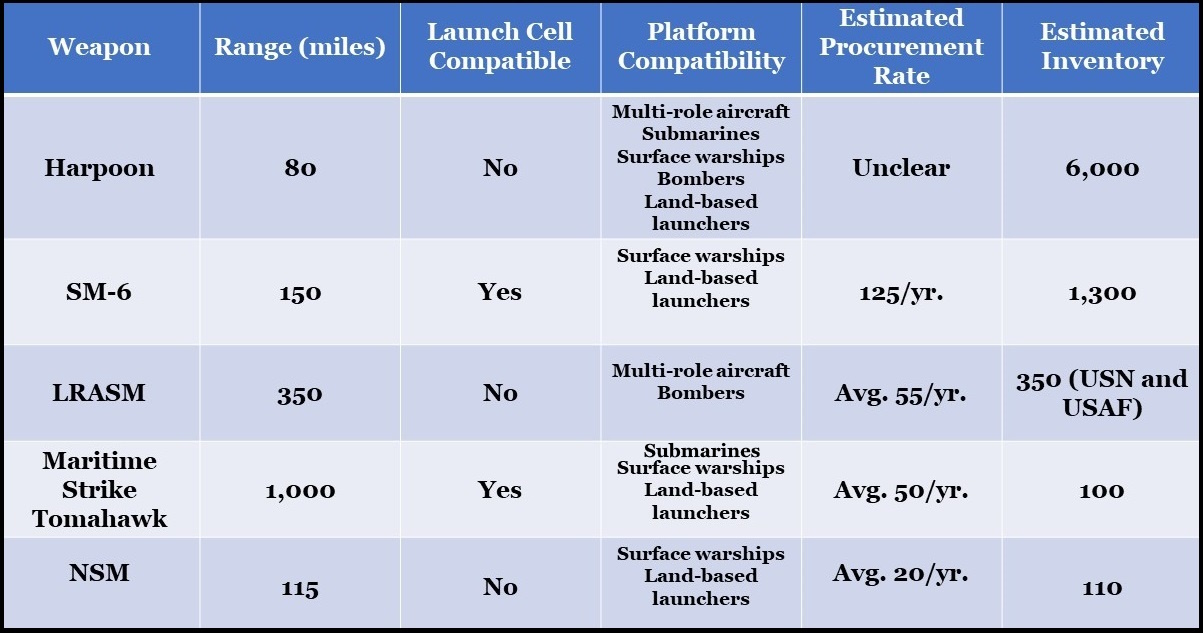
Among the weapon traits analyzed, the depth of inventory stands out as an especially critical constraint in the capital-intensive nature of modern naval salvo combat. Even if highly capable missiles are being procured, inventory depth is the key variable that will prevent the U.S. military from having enough modern anti-ship missile firepower through at least the rest of this decade. Current stocks of modern U.S. anti-ship missiles are not remotely close to satisfying the demands of a type of combat that can require more than a hundred missiles to overwhelm the defenses of only a few destroyers, where a decade’s worth of weapons procurement can easily be discharged in a matter of hours.
As it currently stands, most of the inventory of the Navy’s anti-ship missiles except for Harpoon could be spent in a handful of salvo engagements. The appropriate amount to meet great power naval threats is not dozens or even hundreds of weapons, but thousands – a figure that grossly exceeds the inventory of all of the U.S. military’s latest generation of anti-ship weapons. And even if procurement rates have substantially grown the inventory 15 years from now, competitors could have grown their own arsenals over the same period, such as by building out deep inventories of anti-ship ballistic missiles and hypersonics that sustain a critical margin of overmatch.
It is unclear how exactly the U.S. military has chosen to distribute or concentrate its small but growing inventory of modern anti-ship weapons. A major crisis could force the U.S. military to scrounge across the force in a rush to assemble enough weapons to field an adequate volume of fire. If these rare weapons are spread across the east- and west coast-based fleets, the Navy may be forced to engage in an elaborate act of transcontinental crossdecking to concentrate enough credible firepower in crisis response units.
These pervasive capability gaps have created a major window of opportunity for great power challengers to capitalize on the strategic liability posed by the weakness of the American naval arsenal. Until new weapons are fielded in large enough numbers, the U.S. military may be forced to endanger its single most expensive platform to close the gap – aircraft carriers.
Part 3 will focus on assembling massed fires and modern fleet tactics.
Dmitry Filipoff is CIMSEC’s Director of Online Content and Community Manager of its naval professional society, the Flotilla. He is the author of the “How the Fleet Forgot to Fight” series and coauthor of “Learning to Win: Using Operational Innovation to Regain the Advantage at Sea against China.” Contact him at [email protected].
References
1. “Tomahawk Cruise Missile,” U.S. Navy Fact File, last updated September 27, 2021, https://www.navy.mil/Resources/Fact-Files/Display-FactFiles/Article/2169229/tomahawk-cruise-missile/.
2. “Flight Operations Support & Line Assistance: Getting to Grips with Fuel Economy,” Airbus, Issue 4, pg. 36-40, October 2004, https://www.smartcockpit.com/docs/Getting_To_Grips_With_Fuel_Economy.pdf.
3. For variable flight profiles of anti-ship missiles, see:
Dr. Carlo Kopp, “Killing the Vampire,” Defence Today, 2008. http://www.ausairpower.net/SP/DT-Vampires-2008.pdf.
Dr. Carlo Kopp, “Evolving Naval Anti-Ship Weapons Threat,” Defence Today, 2010. http://www.ausairpower.net/SP/DT-ASBM-Dec-2009.pdf.
For Tomahawk waypointing capability, see:
“Tomahawk,” Naval Air Systems Command, https://www.navair.navy.mil/product/Tomahawk.
4. Ross R. Hatch, Joseph L. Luber, and James H. Walk, “Fifty Years Of Strike Warfare Research At The Applied Physics Laboratory,” Johns Hopkins APL Technical Digest, Volume 13, Number I, pg. 117, 1992, https://www.jhuapl.edu/Content/techdigest/pdf/V13-N01/13-01-Hatch.pdf.
Kenneth P. Werrell, “The Evolution of the Cruise Missile,” Air University Press, pg. 150, September 1985, https://media.defense.gov/2017/Apr/07/2001728474/-1/-1/0/B_0006_WERRELL_EVOLUTION_CRUISE_MISSILE.PDF.
5. For Harpoon range, see:
Alan Cummings, “A Thousand Splendid Guns: Chinese ASCMs in Competitive Control,” U.S. Naval War College Review, Autumn 2016, https://digital-commons.usnwc.edu/cgi/viewcontent.cgi?referer=https://cimsec.org/?p=37357&preview_id=37357&preview_nonce=33a19394d2&post_format=standard&_thumbnail_id=37675&preview=true&httpsredir=1&article=1143&context=nwc-review.
“RGM-84 Harpoon Block II,” Royal Australian Navy, https://www.navy.gov.au/weapon/rgm-84-harpoon-block-ii.
“Harpoon Next Generation Backgrounder,” Boeing, https://www.boeing.co.kr/resources/ko_KR/Seoul-International/2015/Harpoon-Next-Generation.pdf.
For less common Harpoon Block II+ variant, see:
Kyle Mizokami, “Navy’s Harpoon Missile Misses Target During Test Fire,” Popular Mechanics, July 21, 2016, https://www.popularmechanics.com/military/weapons/news/a21979/navy-shoots-new-anti-ship-missile-misses/.
6. “Report to Congress on the Annual Long-Range Plan for Construction of Naval Vessels for Fiscal Year 2023,” Office of the Chief of Naval Operations Deputy Chief of Naval Operations for Warfighting Requirements and Capabilities – OPNAV N9, pg. 9, April 2022, https://media.defense.gov/2022/Apr/20/2002980535/-1/-1/0/PB23%20SHIPBUILDING%20PLAN%2018%20APR%202022%20FINAL.PDF.
7. J. Michael Dahm, “A Survey of Technologies and Capabilities on China’s Military Outposts in the South China Sea,” South China Sea Military Capability Series, Johns Hopkins Applied Physics Laboratory, pg. 6, March 2021, https://apps.dtic.mil/sti/pdfs/AD1128637.pdf.
8. “Weapons Acquisition: Precision Guided Munitions in Inventory, Production, and Development,” General Accounting Office, pg. 14, June 1995, https://www.govinfo.gov/content/pkg/GAOREPORTS-NSIAD-95-95/pdf/GAOREPORTS-NSIAD-95-95.pdf.
9. For capabilities and production history, see:
“Standard Missile 6 (SM-6): December 2021 Selected Acquisition Report (SAR),” Department of the Navy, December 31, 2021, https://www.esd.whs.mil/Portals/54/Documents/FOID/Reading%20Room/Selected_Acquisition_Reports/FY_2021_SARS/22-F-0762_SM6_SAR_2021.pdf.
For weapon range, see:
“Options for Fielding Ground-Launched Long-Range Missiles,” Congressional Budget Office, pg. 24, 2020, https://www.cbo.gov/publication/56143.
10. Sam LaGrone, “SECDEF Carter Confirms Navy Developing Supersonic Anti-Ship Missile for Cruisers, Destroyers,” USNI News, February 9, 2016, https://news.usni.org/2016/02/04/secdef-carter-confirms-navy-developing-supersonic-anti-ship-missile-for-cruisers-destroyers.
11. Mark A. Landis, “Overview of the Fire Control Loop Process for Aegis LEAP Intercept,” Johns Hopkins APL Technical Digest, Volume 22, Number 4, pg. 439-440, 2001, https://www.jhuapl.edu/Content/techdigest/pdf/V22-N04/22-04-Landis.pdf.
12. This calculation was arrived at by dividing the range of the SM-6 (150 miles) using the SM-6’s Mach 3.5 speed (2,685 miles), adding about 30 seconds to account for acceleration to max speed from launch, and a radar horizon profile of a radar mounted 30ft. high and the SM-6 coming into view at about 7,000 feet of altitude, which corresponds to the 150 mile range of the weapon. This comes to about four minutes of warning to the target warship. The subsonic missile time is calculated at 550mph breaking over a horizon that is 20 miles, giving the target warship slightly more than two minutes of warning.
13. “Options for Fielding Ground-Launched Long-Range Missiles,” Congressional Budget Office, pg. 25, 2020, https://www.cbo.gov/publication/56143.
14. “Military and Security Developments Involving the People’s Republic of China 2022,” U.S. Department of Defense, pg. 64-65, 2022, https://media.defense.gov/2022/Nov/29/2003122279/-1/-1/1/2022-MILITARY-AND-SECURITY-DEVELOPMENTS-INVOLVING-THE-PEOPLES-REPUBLIC-OF-CHINA.PDF.
15. “Maritime Security Dialogue: The Aegis Approach with Rear Admiral Tom Druggan,” Center for International and Strategic Studies, November 21, 2021, https://www.csis.org/analysis/maritime-security-dialogue-aegis-approach-rear-admiral-tom-druggan.
16. For total SM-6 inventory figure, see:
“Department of Defense Fiscal Year (FY) 2023 Budget Estimates,” Navy Justification Book Volume 1 of 1 Weapons Procurement, Navy, Page 1 of 13 P-1 Line #6, (PDF pg. 137), April 2022, https://www.secnav.navy.mil/fmc/fmb/Documents/23pres/WPN_Book.pdf.
For full-rate production, see:
“Standard Missile-6 (SM-6,” December 2019 Select Acquisition Report, Department of Defense, pg. 7, December 2019, https://www.esd.whs.mil/Portals/54/Documents/FOID/Reading%20Room/Selected_Acquisition_Reports/FY_2019_SARS/20-F-0568_DOC_72_SM-6_SAR_Dec_2019_Full.pdf.
“Raytheon’s SM-6 moves from low-rate to full-rate production Milestone clears path for larger quantities, lower costs,” Raytheon Technologies, May 6, 2015, https://raytheon.mediaroom.com/2015-05-06-Raytheons-SM-6-moves-from-low-rate-to-full-rate-production.
Rich Abott, “Raytheon Wins $1 Billion Contract For SM-6 Full Rate Production,” Defense Daily, December 26, 2019, https://www.defensedaily.com/raytheon-wins-1-billion-contract-sm-6-full-rate-production/navy-usmc/.
17. For 2011-2016 procurement rates, see:
“Department of Defense Fiscal Year (FY) 2017 President’s Budget Submission,” Justification Book Volume 1 of 1 Weapons Procurement, Navy, Page 7 of 12 P-1 Line #7 (PDF pg. 137), February 2016, https://www.secnav.navy.mil/fmc/fmb/Documents/17pres/WPN_Book.pdf.
For 2017-2021 procurement rates, see:
Department of Defense Fiscal Year (FY) 2022 Budget Estimates, Justification Book Volume 1 of 1 Weapons Procurement, Navy, Page 6 of 11 P-1 Line #6 (PDF pg. 123), https://www.secnav.navy.mil/fmc/fmb/Documents/22pres/WPN_Book.pdf.
18. For 1982 test date: E. H. Corirow, G. K. Smith, A. A. Barboux, “The Joint Cruise Missiles Project: An Acquisition History, Appendixes,” RAND, pg. 46, August 1982, https://www.rand.org/pubs/notes/N1989.html.
19. “Tomahawk Cruise Missile,” U.S. Navy Fact File, last updated September 27, 2021, https://www.navy.mil/Resources/Fact-Files/Display-FactFiles/Article/2169229/tomahawk-cruise-missile/.
20. “Navy awards first ever multi-service contract for Tomahawk Weapons System,” Naval Air Systems Command, May 24, 2022, https://www.navair.navy.mil/news/Navy-awards-first-ever-multi-service-contract-Tomahawk-Weapons-System/Tue-05242022-1347.
21. For 2024 MST IOC, see:
Statement of Frederick J. Stefany, Principal Civilian Deputy, Assistant Secretary of the Navy (Research, Development and Acquisition), Performing the Duties of the Assistant Secretary of the Navy (Research, Development and Acquisition) and Vice Admiral Scott Conn, Deputy Chief of Naval Operations, Warfighting Requirements and Capabilities (OPNAV N9) and Lieutenant General Karsten S. Heckl, Deputy Commandant, Combat Development and Integration, Commanding General, Marine Corps Combat Development Command, before the Subcommittee on Seapower of the Senate Armed Services Committee on Department of the Navy Fiscal Year 2023 Budget Request for Seapower, PDF pages 31-32, April 26, 2022, https://www.armed-services.senate.gov/imo/media/doc/HS_26APR22_RDA_SASC_S_DON_PB23_Shipbuilding_Aviation_Ground_FINAL%20(2).PDF.
For MST low-rate initial production, see:
Department of Defense Fiscal Year (FY) 2022 Budget Estimates, Justification Book Volume 1 of 1 Weapons Procurement, Navy, Page 11 of 11 P-1 Line #18 (PDF pg. 269), https://www.secnav.navy.mil/fmc/fmb/Documents/22pres/WPN_Book.pdf.
For current MST production quantity, see:
“Department of Defense Fiscal Year (FY) 2023 Budget Estimates,” Navy Justification Book Volume 1 of 1 Weapons Procurement, Navy, Page 3 of 14 P-1 Line #18, (PDF pg. 283), April 2022, https://www.secnav.navy.mil/fmc/fmb/Documents/23pres/WPN_Book.pdf.
22. For plans to recertify all Block IV Tomahawks into Block V variants, see:
“Navy completes first delivery of Block V Tomahawk Missile,” Naval Air Systems Command, March 25, 2021, https://www.navair.navy.mil/news/Navy-completes-first-delivery-Block-V-Tomahawk-Missile/Wed-03242021-1700.
For possibility of 300 Block V recertification kits per year, see:
Department of Defense Fiscal Year (FY) 2022 Budget Estimates, Justification Book Volume 1 of 1 Weapons Procurement, Navy, Page 3 of 11 P-1 Line #18 (PDF pg. 261), https://www.secnav.navy.mil/fmc/fmb/Documents/22pres/WPN_Book.pdf.
23. For different Block V subvariants, see:
“Tomahawk Cruise Missile,” Raytheon Missiles and Defense, https://www.raytheonmissilesanddefense.com/what-we-do/naval-warfare/advanced-strike-weapons/tomahawk-cruise-missile.
24. The LRASM range of 350 miles is a rough estimate deduced from the JASSM missile it is derived from, see:
“Options for Fielding Ground-Launched Long-Range Missiles,” Congressional Budget Office, pg. 2, 2020, https://www.cbo.gov/publication/56143.
25. For Navy description of LRASM, see:
“Department of Defense Fiscal Year (FY) 2023 Budget Estimates,” Navy Justification Book Volume 1 of 1 Weapons Procurement, Navy, Page 1 of 10 P-1 Line #16, (PDF pg. 261), April 2022, https://www.secnav.navy.mil/fmc/fmb/Documents/23pres/WPN_Book.pdf.
For industry testing of launch cell compatible LRASM, see:
Sam LaGrone, “LRASM Scores in Navy Test Ship Launch,” USNI News, July 20, 2016, https://news.usni.org/2016/07/20/lrasm-scores-ship-launch-test.
26. “Lockheed Martin And Thales Australia Finalize Teaming Agreement To Develop Sovereign Weapons Manufacturing Capabilities In Australia,” Lockheed Martin, April 21, 2021, https://news.lockheedmartin.com/lockheed-martin-and-thales-australia-finalize-teaming-agreement.
27. “Department of Defense Fiscal Year (FY) 2023 Budget Estimates,” Navy Justification Book Volume 1 of 1 Weapons Procurement, Navy, Page 7 of 10 P-1 Line #16, (PDF pg. 267), April 2022, https://www.secnav.navy.mil/fmc/fmb/Documents/23pres/WPN_Book.pdf.
28. “Department of Defense Fiscal Year (FY) 2023 Budget Estimates,” Navy Justification Book Volume 1 of 1 Weapons Procurement, Navy, Page 1 of 10 P-1 Line #16, (PDF pg. 261), April 2022, https://www.secnav.navy.mil/fmc/fmb/Documents/23pres/WPN_Book.pdf.
29. For JASSM and LRASM commonality, see:
Sandra I. Irin, “Pentagon Accelerates Acquisitions of Ship-Killing Missiles,” National Defense Magazine, December 15, 2016, https://www.nationaldefensemagazine.org/articles/2016/12/15/pentagon-accelerates-acquisitions-of-ship-killing-missiles.
For JASSM inventory: “Department of Defense Fiscal Year (FY) 2023 Budget Estimates,” Air Force Justification Book Volume 1 of 1 Missile Procurement, Air Force, Page 4 of 12 P-1 Line #7 (PDF pg. 68), April 2022, https://www.saffm.hq.af.mil/Portals/84/documents/FY23/PROCUREMENT_/FY23%20Air%20Force%20Missile%20Procurement.pdf?ver=QeRLpOSY7vcLmsKbr3C-Qw%3D%3D.
For U.S. Navy first procurement batch of JASSM, see:
Richard R. Burgess, “Navy Plans to Arm F/A-18E/F, F-35C with Air Force’s JASSM-ER Cruise Missile,” Seapower Magazine, June 15, 2021, https://seapowermagazine.org/navy-plans-to-arm-f-a-18e-f-f-35c-with-air-forces-jassm-er-cruise-missile/.
30. Brian A. Everstine, “USAF to Start Buying ‘Extreme Range’ JASSMs in 2021, Air & Space Forces Magazine, February 14, 2020, https://www.airandspaceforces.com/usaf-to-start-buying-extreme-range-jassms-in-2021/.
31. “Department of Defense Fiscal Year (FY) 2023 Budget Estimates,” Air Force Justification Book Volume 1 of 1 Missile Procurement, Air Force, Page 5 of 12 P-1 Line #7, (PDF pg. 69), April 2022, https://www.saffm.hq.af.mil/Portals/84/documents/FY23/PROCUREMENT_/FY23%20Air%20Force%20Missile%20Procurement.pdf?ver=QeRLpOSY7vcLmsKbr3C-Qw%3D%3D.
32. “NSM™ Naval Strike Missile (NSM),” Kongsberg, https://www.kongsberg.com/kda/what-we-do/defence-and-security/missile-systems/nsm-naval-strike-missile-nsm/.
33. “Department of Defense Fiscal Year (FY) 2023 Budget Estimates,” Navy Justification Book Volume 1 of 1 Weapons Procurement, Navy, Page 1 of 10 P-1 Line #17, (PDF pg. 271), April 2022, https://www.secnav.navy.mil/fmc/fmb/Documents/23pres/WPN_Book.pdf.
34. For Chinese anti-ship weapons and force structure, see:
Dr. Sam Goldsmith, “VAMPIRE VAMPIRE VAMPIRE The PLA’s anti-ship cruise missile threat to Australian and allied naval operations,” Australian Strategic Policy Institute, April 2022, https://ad-aspi.s3.ap-southeast-2.amazonaws.com/2022-04/Vampire%20Vampire%20Vampire_0.pdf?VersionId=tHAbNzJSXJHskd9VppGNRcTFC4hW7UqD.
For Russian anti-ship weapons and force structure, see:
“The Russian Navy: A Historic Transition,” Office of Naval Intelligence, December 2015, https://www.oni.navy.mil/Portals/12/Intel%20agencies/russia/Russia%202015screen.pdf?ver=2015-12-14-082028-313.
Featured Image: PHILIPPINE SEA (Oct. 1, 2019) Independence-variant littoral combat ship USS Gabrielle Giffords (LCS 10) launches a Naval Strike Missile (NSM) during exercise Pacific Griffin. (U.S. Navy Photo by Mass Communication Specialist 3rd Class Josiah J. Kunkle)

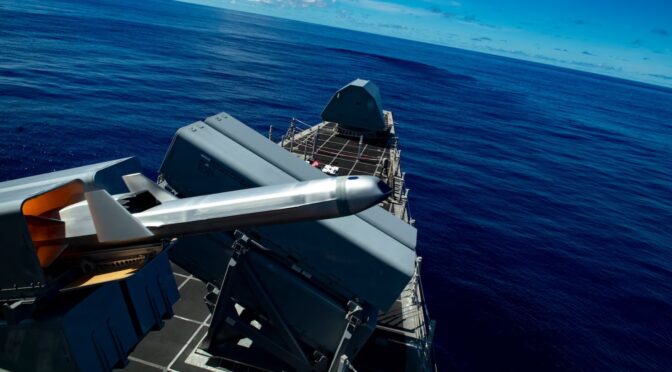
Many targets won’t need a high end solution like those focused on in this article. We need enough to take out the air umbrella and send the rest running for cover, almost an actual lesson from the Ukraine war here.
Guided bombs can finish off many platforms and many small platforms can still be addressed by Hellfire/JAGM, especially as efforts now focus on range extension. Remember, USNs real PT / Missile boats are MH-60s. There is no reason a surface combatant need engage in a fair fight. Get NSM on the helicopters. Volume of fire will be lacking, but range improves. Number of platforms can grow too with some planning. No reason an EPF can’t launch an MH-60 for this purpose if we prepare.
Here’s a question, could you load 2 NSM per hard point on a P-8? Also remember the JSM variant is coming rather than JSOW-ER. Could those mount in the bomb/torpedo bay?
The overall concern here starts to make Lockheed’s case to navalize PAC-3MSE for VLS launch. Grow inventorty faster and let those missile take some of the anti air role from SM-6, freeing those missiles for Naval strike. Plus if we moved toward Mk 57 VLS you might quad pack those missiles.
I think the big theme is speeding up the inventory buy and expanding platform integration. We’ve seen an SM-6 on an F-18. What kind of range are we talking about for an air launched SM-6?
When thinking about being limited by carrier numbers, whatever we can get external on an F-35 ups our flat top number by 9.
Tying NSM to land vehicles is a real bad approach. Can the Marines get AH-1Z to carry them? Add another 110nm. It may not be 1000nm, but lots of the time, it won’t need to be. It just needs to be faster and less predictable.
If one includes USAF bombers in the maritime strike equation the prospects of success in distributed operations are more favorable. Where an F/A-18 can carry 2 LRASMs, a B1B can carry 24; and a B52 can carry 8-10 Harpoon and 20 LRASMs. The rub remains the small and slowly expanding inventory of LRASM.
If one assumes that USAF maritime strike assets would be in support of the JFMCC and supported by Navy situational awareness and targeting, it seems logical that they should be included in architectural considerations, concepts, and tactics for combat in the maritime domain.
USAF big wings are a critical element in defeating an amphibious invasion, but there are two issues. First, as far as I know the USN and USAF have not worked out C2 arrangements. Second is fighter cover. It could come from CVs – we did this during the 1980 hostage crisis – but again I don’t think a scheme for cooperation has been worked out.
The best source I can find is the Multi-Service Tactics, Techniques, and Procedures for Air Operations in Maritime Surface Warfare (AOMSW). The latest version is Dec 2020 not available via Internet.
Only the 2008 version is available at: https://info.publicintelligence.net/MTTP-AOMSW.pdf
Good article on the subject: https://www.airuniversity.af.edu/Portals/10/ASPJ/journals/Volume-28_Issue-4/F-Dalman_Kopp_Redman.pdf
I’m not sure why this article insists LRASM is not VLS-compatible when there’s a picture of an LRASM launching out of a VLS in the article (it even says so in the caption).
My understanding is that the VLS-compatible LRASM that is pictured was purpose-made for testing and demonstration. It appears a unique booster is needed to be attached to the missile to make it fire from launch cells, so the missile by itself is not VLS compatible.